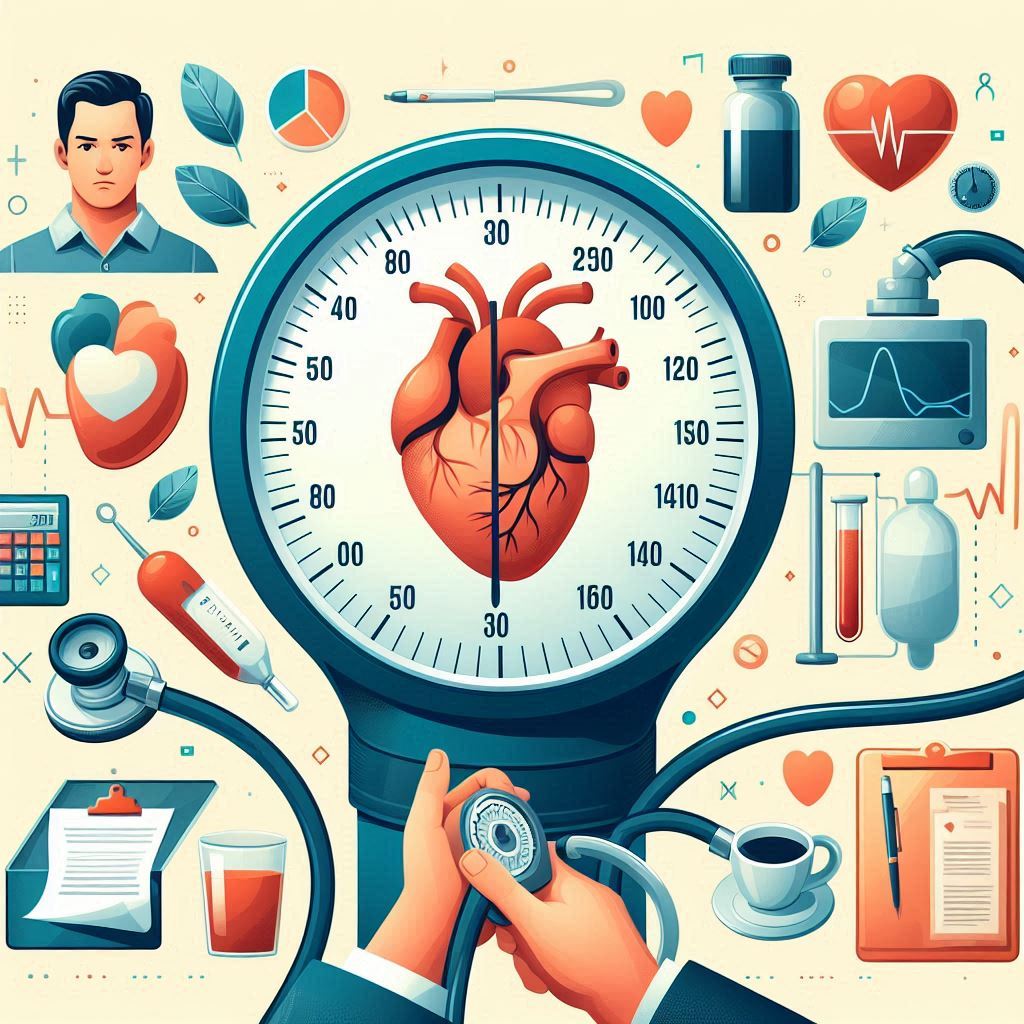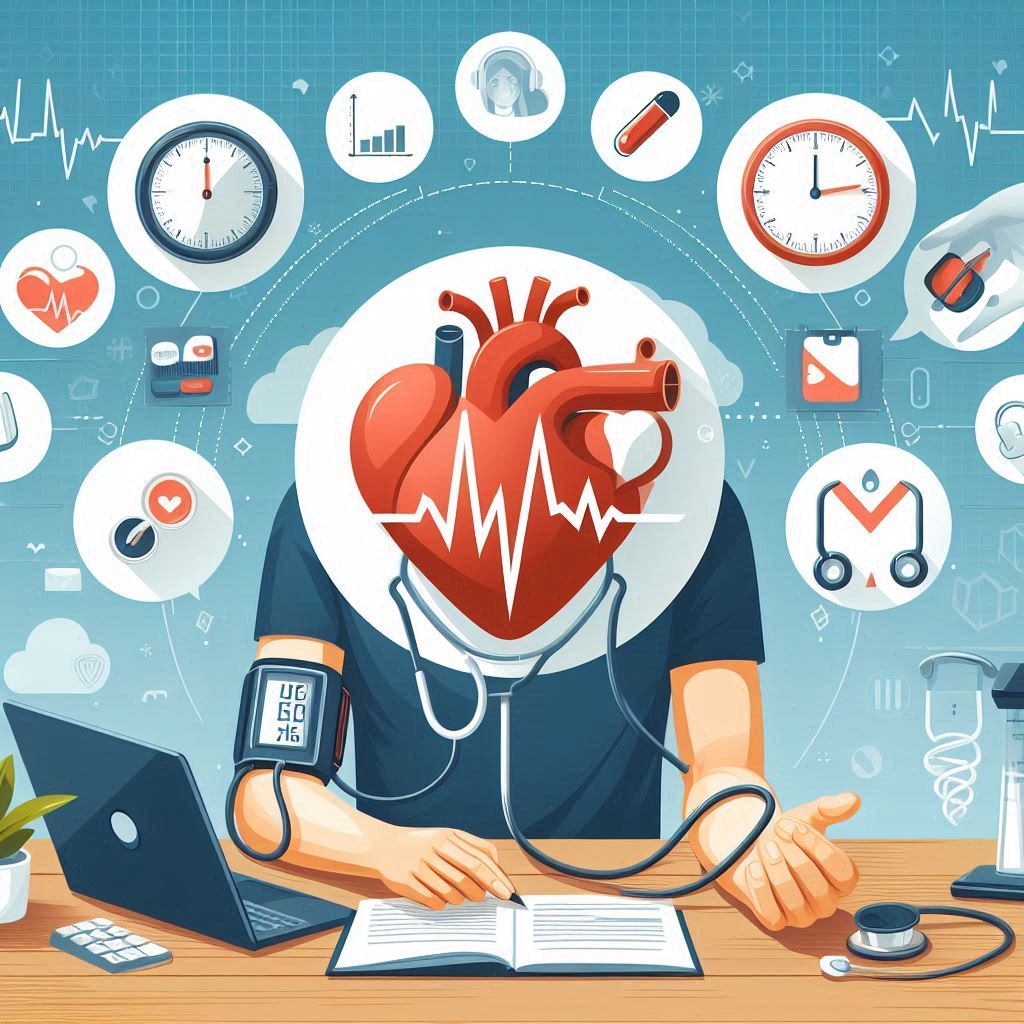Introduction
High blood pressure, also known as hypertension, is a common health condition that affects millions worldwide. Often referred to as the “silent killer,” it can lead to serious complications like heart disease, stroke, and kidney problems if left unmanaged. Fortunately, understanding its causes, symptoms, and effective management strategies can help maintain healthy blood pressure levels and promote overall well-being. This guide provides a comprehensive overview of high blood pressure and actionable steps to manage it effectively.

What is High Blood Pressure?
- Definition: Blood pressure is the force of blood against the walls of arteries. Hypertension occurs when this pressure is consistently too high.
- Measurements: Blood pressure readings have two numbers:
- Systolic pressure: The top number, indicating the pressure when the heart beats.
- Diastolic pressure: The bottom number, indicating the pressure when the heart rests between beats.
- Normal Range: A healthy blood pressure reading is typically below 120/80 mm Hg.
- Hypertension Diagnosis: Readings consistently at or above 130/80 mm Hg.
Causes of High Blood Pressure
- Genetic Factors: Family history can increase risk.
- Unhealthy Diet: High salt intake, processed foods, and low intake of fruits and vegetables.
- Physical Inactivity: Lack of exercise contributes to weight gain and poor heart health.
- Obesity: Excess weight puts additional strain on the heart and arteries.
- Stress: Chronic stress can lead to temporary and long-term blood pressure increases.
- Alcohol and Tobacco Use: Both raise blood pressure levels and contribute to heart disease.
- Chronic Conditions: Conditions like diabetes and kidney disease can increase risk.
- Age: Risk increases with age due to reduced elasticity of arteries.
Symptoms of High Blood Pressure
High blood pressure is often asymptomatic but can manifest as:
- Headaches
- Dizziness
- Blurred vision
- Shortness of breath
- Nosebleeds
- Chest pain (in severe cases)
Health Risks Associated with High Blood Pressure
- Heart Disease: Increased risk of heart attacks, heart failure, and arrhythmias.
- Stroke: Elevated blood pressure can lead to strokes by damaging blood vessels in the brain.
- Kidney Damage: Hypertension can impair kidney function over time.
- Vision Loss: High pressure can damage blood vessels in the eyes.
- Cognitive Decline: Long-term hypertension is linked to memory problems and dementia.
Effective Strategies for Managing High Blood Pressure
1. Adopt a Heart-Healthy Diet
- Reduce Sodium Intake: Limit salt to less than 2,300 mg per day, or ideally 1,500 mg.
- Eat More Fruits and Vegetables: Rich in potassium, which helps balance sodium levels.
- Choose Whole Grains: Oats, brown rice, and quinoa support heart health.
- Incorporate Healthy Fats: Avocados, olive oil, and nuts support cardiovascular health.
- Limit Processed Foods: Reduce consumption of packaged snacks and fast food.
2. Engage in Regular Physical Activity
- Aim for 150 Minutes Weekly: Moderate-intensity activities like brisk walking or swimming.
- Strength Training: Engage in muscle-strengthening activities at least twice a week.
- Incorporate Daily Movement: Take the stairs, walk during breaks, and stay active throughout the day.
3. Maintain a Healthy Weight
- Calculate BMI: Aim for a healthy body mass index (BMI) between 18.5 and 24.9.
- Adopt Portion Control: Mindful eating helps prevent overeating.
- Focus on Nutrient-Dense Foods: Choose foods that are low in calories but high in nutrients.
4. Manage Stress Effectively
- Practice Relaxation Techniques: Meditation, deep breathing, and yoga can reduce stress.
- Establish a Healthy Routine: Consistent sleep and balanced work-life habits reduce stress levels.
- Seek Support: Talk to friends, family, or professionals for emotional support.
5. Limit Alcohol and Avoid Tobacco
- Alcohol: Limit to one drink per day for women and two for men.
- Tobacco: Quit smoking to reduce blood pressure and overall health risks.
6. Monitor Blood Pressure Regularly
- Use a Home Monitor: Track readings at the same time daily.
- Consult Healthcare Providers: Regular check-ups help identify and manage any changes.
7. Follow Medication Guidelines
- Take Prescribed Medications: Adhere to dosage and timing instructions.
- Understand Side Effects: Communicate with doctors about any concerns or adverse effects.
- Never Stop Medications Abruptly: Always consult a healthcare professional before making changes.
Natural Remedies to Support Blood Pressure Management
- Increase Potassium Intake: Bananas, potatoes, and leafy greens are excellent sources.
- Reduce Caffeine: High caffeine consumption can temporarily raise blood pressure.
- Stay Hydrated: Drink plenty of water throughout the day.
- Use Herbs: Garlic, basil, and cinnamon have been linked to improved blood pressure control.
When to Seek Medical Attention
- If blood pressure readings are consistently above 140/90 mm Hg.
- If you experience severe headaches, chest pain, or shortness of breath.
- If you notice sudden changes in vision or difficulty speaking.

Conclusion
Managing high blood pressure is essential for maintaining long-term health and reducing the risk of life-threatening complications. By adopting a heart-healthy lifestyle, monitoring blood pressure, and following medical guidance, you can effectively control hypertension and enjoy a healthier, more active life. Prioritize small, consistent changes for lasting benefits.





